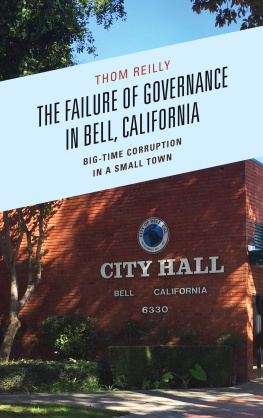Landscaping with Annuals
by Ann Reilly
CONTENTS
Introduction
You are proud of your home. The landscape seems complete. Attractive shrubbery frames the house. Stately trees contribute strength, definition, and shade. Ornamental flowering trees provide attractive accents. The lawn is lush and green, carpeting the complete scene. Yet something is missing.
The only finishing touch your home needs may very well be more color. The most rewarding and easiest way to achieve this color is with the use of annual flowers. They create a mood, add another dimension, and enhance the beauty of the home.
Instant beauty, and spectacular and diverse color: these are the advantages and charms of annual flowers. By definition, an annual is a plant that grows, flowers, sets seed, and dies in the same season. The term annual is also applied to tender perennials that survive the winter only in the mildest of climates but are grown during the summer in other areas. The real meaning of the term annual is a myriad of color, size, beauty, and form that will burst forth in the landscape from spring frost to fall frost. Every year, theres the anticipation of a new look and new colors with flowers that are readily available at minimum cost.
Beds or Borders?
The impact that flowers make is a measure of professionalism in the home landscape. Wherever space permits, annual flower beds and/or borders should be included in the overall design. Flower beds are those plantings that are accessible from all sides. An example is an island planting in the middle of the lawn. Borders, on the other hand, are at the edge of an area, be it the lawn, walkway, driveway, foundation, shrub planting, or fence.
Because borders can usually be worked from only one side, do not plan them any deeper than 5 feet at the most, or maintenance will be difficult. Up to that point, they can be as wide as space and looks permit. Beds should be planned in relation to the surrounding area; dont try to situate too large a bed in a small grassed area, or it will be out of proportion.
You can locate beds and borders anywhere on your grounds, uniting plantings of evergreens and flowering trees and shrubs with ribbons of living color.
Besides adding aesthetic value, beds and borders can be used to either highlight or camouflage areas or even to direct foot traffic. If you want to draw attention to your front door, frame it with color. If you want to conceal your trash cans, let an annual vine climb on a trellis in front of them. If you dont want the children cutting across the front lawn, plant a border of annuals to make them walk around the lawn to the path.

Annual cutting garden.
Special Effects with Annuals
In addition to their primary use in beds and borders, bedding plants can be called upon for a variety of special uses. Flowering vines are unequalled as temporary screens on fences, trellises, or arbors. Select from morning glory, black-eyed Susan vine, cardinal climber, moonflower, sweet pea, scarlet runner bean, or nasturtium.
In newly planted landscapes, annuals can be used as a quick cover while you wait for the shrubs and permanent ground covers to mature. Depending on the exposure and temperature, a number of good choices are available. For example, in hot climates, choose vinca, portulaca, petunia, or sweet alyssum. In cool areas, select phlox or lobelia.
You may want to bring the beauty of your garden indoors and have cut flowers for the living room. Your flowering annuals can do double duty if you choose types that can be cut and used in arrangements. Frequent cutting of flowers also encourages new growth as well as increased bloom.
Think of annuals as combination plants. While magnificent when used alone, they can also be planted quite effectively with perennials, summer bulbs, and dwarf shrubs. Consider rotating annual plantings over the growing season for the longest-lasting color effect. In warm areas, this can be done year-round. Start with pansies, forget-me-not, or other cool-temperature plants in spring, followed by any of a large selection of summer annuals, and end the season with another old favorite such as flowering mums, flowering cabbage, or kale.

Vinca
Coloring Your Annual World
Color is probably the most striking aspect of flower bed design. It reflects the personality and mood of your home. Warm tones of yellow, gold, orange, and red attract attention to those sections of the garden where they are used. Blue and violet, on the other hand, create a quieter, more tranquil mood. Warm colors make a planting appear smaller than it actually is, while cool colors make it appear larger.
Keep color schemes simple. Use more than one or two colors only in a bed of the same plant, such as zinnias, impatiens, dahlias, or celosia.
There are a number of possible harmonies you can select. Choose complementary (opposite) colors such as orange and blue (calendulea with lobelia), or violet with yellow (two different varieties of pansies). Split complementary color combines one color with the color to either side of its opposite. Examples would be red with blue (salvia and ageratum), or red with yellow (red geraniums with yellow dahlias). Treat pink, a tint of red, the same way as red when designing. Treat violet the same way as purple. Analogous color harmony is three colors in a row on the wheel, such as yellow, yellow-orange or gold, and orange (marigolds). Monochromatic design is different tones of the same color (pink and/or red geraniums, zinnias, or impatiens). Select one harmony and stay with it throughout the bed or border for best effect.
White can blend well with any other color or be effective alone. Like pastels, especially light pinks, white is most effective when viewed at night, as it reflects moonlight, streetlights, and garden lights. It is best used massed alone or as a unifying border to other annuals. Whites used as buffers between two conflicting colors can often make the design look spotty and disjointed. The same rules that apply to white-flowered annuals apply to white, silver, and gray foliage plants, such as dusty miller.
Designing Your Annual World
Design is the next step in creating your colorful world. Decide which plant sizes will best conform to the surroundings. Small beds or edgings along low hedges or beneath foundation plantings demand a low-growing choice, such as ageratum, alyssum, or begonias. In larger areas, you can vary the height to make the effect more interesting, especially if the ground is flat. In a free standing bed, place taller plants in the center, stepping down to an intermediatesized plant and then to a ground-hugging annual in front. For a border against a fence or wall, use the tallest in the back and work down to the front.
For a mixed bed or border, choose three sizes of plants. This can be done by combining three varieties of the same plant, such as zinnias or marigolds, in different heights; or by combining three different plants, such as tall spider flowers and medium-sized dahlias trimmed with a carpet of low-growing petunias.
Plants also grow in many different shapes, a mixture of which is most attractive in a mixed bed. Imagine a combination of spiked snapdragons intermingled with mounded begonias and edged with low-growing lobelia. Annuals also grow upright and bushy (African marigolds) or in an open, informal manner (cosmos). Again, try to work in groups of three.









